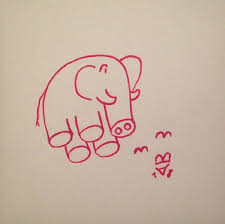
Anton Bruhin
Carona
Single IT 2018 on Alga Marghen label
Electronic and Spoken Word (Experimental, Poetry)
Published on the occasion of the exhibition “Carona” at Weiss Falk during ArtBasel in June 2018, this 7” single presents two previously unpublished sonic works by Anton Bruhin. “Carona Soundscape 1976” is, according to the artist, the perfect sonic picture of what represented the artistic and intellectual scene that developed in the small Ticino village of Carona in the 1970s. the artists David Weiss, Peter Schweri, Anton Bruhin, Urs Luthi, Meret Oppenheim and Markus Raetz, but also creative artists from other fields such as the author and publisher Matthyas Jenny lived there at the same time and maintained a lively exchange. “Donald Duck der Kunstkenner” is a short sound-poem improvised by Anton Bruhin and David Weiss in October 1976, reading modified comics and using altered voices and concrete noises. the sodality between two great artists. Edition limited to 36 numbered and signed copies in gatefold sleeve with an original drawing by Anton Bruhin on the front as well as the reproduction of David Weiss portrait by Anton Bruhin and Anton Bruhin’s self-portrait. Co-produced by algamars for alga marghen and Weiss Falk for Hacienda Books. From the Weiss Falk exhibition presentation: Carona has drawn artists and writers ever since the early 20th century. The Wengers, a family of Basel entrepreneurs, were an enduring mainstay of cultural life there. Lisa Wenger, a famous children’s book writer and painter, lived in the village with her husband and children. Her daughter Ruth was married to Hermann Hesse (1877–1962), who wrote several pieces about the village and its surroundings and captured his visual impressions in a number of watercolors. Lisa Wenger’s granddaughter, Meret Oppenheim, had her second home in Carona from the 1960s on. Even in the ’70s young artists were drawn to the place by the Wenger family. Oppenheim’s nephew, Christoph Wenger, kept open house at Casa Aprile, which attracted the Swiss hippie and art scene. So this picturesque little village became an important point of reference for the artists featured in this exhibition, all of whom led rather nomadic lives. To help with repairs to Casa Aprile — in return for free lodgings — David Weiss (1946–2012) moved to the village in the late ’60s and did much of his early work there. His Zürich artist friends Peter Schweri and Anton Bruhin were drawn to the village several years later: Bruhin (b. 1949) worked on manuscripts there as well as a series of drawings called “Quink” (1975/76). In a field recording labeled “Carona Soundscape 18 . 3 . 76” you can hear Bruhin typing away in the garden there with chickens clucking and an airplane droning in the background. On the train down to Ticino, Bruhin undertook an artistic experiment that involved drawing continuously in an attempt to capture the landscape as it presented itself to him. He produced whole notebooks of ‘shorthand’ impressions of specific trips, which he called “Landschaftsstenogramme” (or “landscape stenography”). Peter Schweri (1939–2016) also produced a host of colorful and fascinatingly idiosyncratic drawings in Carona. In the late ’60s he shot video clips for a discotheque in Milan and put together a light show using film footage and slide shows for Zürich’s Black Out night club. One such clip opens the Carona exhibition and builds a bridge to the Zürich scene in which these artists moved and in which Schweri, Bruhin and Weiss were often present even while living in Ticino. Meret Oppenheim had her summer residence in the house next door, Casa Costanza, and had plenty of interaction with the young artists staying in Carona. The exhibition includes some of her works from the 1960s and ’70s, including a collage, “Octopus’s Garden” (1971), named after the famous Beatles song. Monika and Markus Raetz lived with their daughter a little further down in the village from 1973–76. During this period Markus Raetz worked almost exclusively on the “Bücher” that laid the groundwork for his entire oeuvre and in which he captured his pictorial worlds in diary form. Similar artistic positions can be made out in the early works of Weiss, Raetz, Bruhin and Schweri. They share an interest in the medium of drawing itself and a certain aversion to producing representative stand-alone works. Instead of engaging in grand gestures, they explore playful, associative processes, as epitomized by their copious, typologically organized metamorphic drawings. There are also parallels in topical references: quotations from comics, psychedelic pictorial worlds and allusions to the history of art and literature are omnipresent in the exhibition. The drawings, sounds, videos, books and ephemera brought together in this show compose a collective narrative that is not intended as a treatise on or mythologization of this scene and period, but as an anecdotal homage to Ticino, a place onto which ardent utopian longings have been projected ever since the back-to-nature Lebensreform movement around Gusto Gräser.
Musicians
 | Anton Bruhin h, *1949 CH album by |
 | David Weiss , 1952-2012 CH voice |
Album Tracks
| No | Title | Artist | Composer | Duration |
|---|---|---|---|---|
| 1 | Carona Soundscape 1976 | Anton Bruhin | ||
| 2 | Donald Duck Der Kunstkenner | Anton Bruhin |
